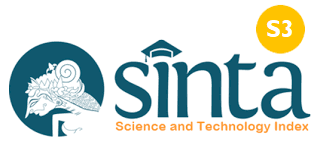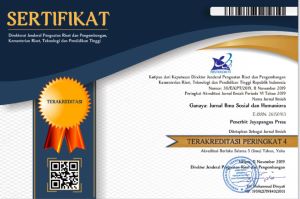Analisis Keputusan Rusia dalam Operasi Militer Khusus ke Ukraina 2022 melalui Pendekatan Decision-Making Theory
DOI:
https://doi.org/10.37329/ganaya.v8i1.3643Keywords:
Russia, Ukraine, NATO, Foreign Policy, Decision-Making, SecurityAbstract
This study aims to analyze Russia's decision to launch Special Military Operations against Ukraine in 2022 using a Decision-Making Theory approach. The primary background of this research is the geopolitical tension related to Ukraine's potential NATO membership, which was perceived as a direct threat to Russia's national security. The method employed in this study is a qualitative analysis based on a literature review, including official documents, academic articles, and other secondary data sources. The findings reveal that Russia's decision was influenced by a security dilemma stemming from NATO's expansion in Eastern Europe and Ukraine's increasing dependence on the West. From an economic perspective, Ukraine's reliance on Russian energy resources became one of the strategic factors in this decision. The study shows that Russia's decision was driven not only by external factors, such as NATO, but also by internal factors, including domestic political support and strong military capabilities. In conclusion, Russia’s decision to launch military operations was a preventive measure to maintain its influence in Eastern Europe, safeguard its national interests, and prevent Ukraine from joining NATO, which is perceived as a long-term threat to Russia's security.
References
Allison, R. (2022). Russia, Ukraine and State Survival through Neutrality. International Affairs, 98(6), 1849–1872 .
Banasik, M. (2022). The Russian Federation Dominance. Polish Political Science Yearbook, 51(3), 7–17.
Brovina, B. (2024). Platforms Of Expansionism: A Comparison Of Russia's Narratives For Ukraine And Serbia's Narratives For Kosovo. Octopus Journal: Hybrid Warfare & Strategic Conflicts, 2, 1-22.
Coplin, W. (2003). Pengantar Politik Internasional: Suatu Telaahan Teoritis. Bandung: Penerbit Sinar Baru.
Dollbaum, J. M., & Kim, S. (2024). Going Jingo: A Classification Of The Wartime Positions Of Russia’s “Systemic Opposition” Parties. Post-Soviet Affairs, 40(3), 222–241.
Eggen, K. A. (2024). Designing Around Nato’s Deterrence: Russia’s Nordic Information Confrontation Strategy. Journal of Strategic Studies, 47(3), 410–434.
Gerlach, I., & Ryndzak, O. (2022). Ukrainian Migration Crisis Caused by the War. Studia Europejskie-Studies in European Affairs, 26(2), 17-29.
Ginintg, Y., Hendri, R. R. S., Gunawan, H., & Nugroho, S. (2023). Perang Rusia vs Ukraina: Perspektif Intelien Strategies. Jakarta: Penerbit Buku Kompas.
Götz, E., & Staun, J. (2022). Why Russia attacked Ukraine: Strategic Culture And Radicalized Narratives. Contemporary Security Policy, 43(3), 482-497.
Gradskova, Y. (2023). Maternalism And New Imperialism In Russia: Good Mothers For A Militarizing State Expectations, Implications, And Resistances. Frontiers in Sociology, 8, 1192822.
Henderson, J. (2024). The Impact Of The Russia-Ukraine War on Global Gas Markets. Current Sustainable/Renewable Energy Reports, 11(1), 1-9.
Izzuddin, A., Indrakorniawan, R., & Stiarso, H. A. (2022). Analisis Upaya Penyelesaian Konflik Rusia - Ukraina Tahun 2022. Pena Wimaya, 2(2), 2-17.
Jaffe, A. M. (2001). Russia, Energy And The West. Survival, 43(2), 133-152.
Katchanovski, I. (2024). The Maidan Massacre in Ukraine. Cham: Palgrave Macmillan.
Kormych, B., & Malyarenko, T. (2023). From Gray Zone To Conventional Warfare: The Russia-Ukraine Conflict In The Black Sea. Small Wars & Insurgencies, 34(7), 1235–1270.
Maitra, S. (2021). NATO Enlargement, Russia, and Balance. Canadian Military Journal, 21(3), 35-46.
Mereacre, A. (2021). The Baltic States–Between NATO’s Protection and Russia’s Threat. Romanian Military Thinking, (3), 158-181.
Nguyen, T. (2023). The Challenges of Dark Ships To The Safety And Security Of Commercial Shipping And The Way Forward. Asia-Pacific Journal of Ocean Law and Policy, 8, 310-328.
Ornay, E. S., & Azizah, N. (2022). Kepentingan Keamanan Nasional Rusia dalam Serangan Militer terhadap Ukraina Tahun 2022. Jurnal Communitarian, 4(1), 565-579.
Polianskii, M. (2024). Russian Foreign Policy Research and War in Ukraine: Old Answers to New Questions?. Communist and Post-Communist Studies, 1-17.
Polyakov, L. (2002). Current Russian-Ukrainian Rapprochement: Forward or Backward? A Rejoinder. Security Dialogue, 33(2), 171-176.
Quilim, N. (2022). Proxy War Rusia dan Amerika Serikat dalam Konflik Internal Ukraina. Makassar: Universitas Hasanuddin.
Rahmadhani, T. P., Bainus, A., Inkiriwang, F. F. (2022). Perang Rusia & Ukraina dalam Perspektif Security Studies: Pemetaan Research Agenda Menggunakan Systematic Mapping Studies dan Systematic Literature Review. Jurnal Analisis Sosial Politik, 6(2), 97-110.
Sidorov, V. (2023). Vladimir Putin’s Views On The Russian Nation And Russian History As The Reason For The Aggression Against Ukraine. Studia Ethnologica Pragensia, (2), 39-60.
Tian, N., Silva, D. L., Béraud, S. L., Lianga, X., Scarazzatoa, L., & Assis, A. (2023). Developments in Military Expenditure And The Effects Of The War In Ukraine. Defence and Peace Economics, 34(5), 547-562.
Victorova, N. (2023). Foreign Investments In The Russian Federation During The Period Of Sanctions: Restrictions Imposed And Their Correlation With The Rights Of Foreign Investors. Courier of Kutafin Moscow State Law University, (9), 66-75.
Yiğit, S. (2021). Donetsk Remains Under Duress: The Occupation Of Eastern Ukraine. DergiPark, 10(2), 203-217.
Downloads
Published
How to Cite
Issue
Section
License
Copyright (c) 2025 Putri Diah Wahyuningtias , Prihandono Wibowo (Author)

This work is licensed under a Creative Commons Attribution-ShareAlike 4.0 International License.
An author who publishes in the Ganaya : Jurnal Ilmu Sosial dan Humaniora agrees to the following terms:
- Author retains the copyright and grants the journal the right of first publication of the work simultaneously licensed under the Creative Commons Attribution-ShareAlike 4.0 License that allows others to share the work with an acknowledgement of the work's authorship and initial publication in this journal
- Author is able to enter into separate, additional contractual arrangements for the non-exclusive distribution of the journal's published version of the work (e.g., post it to an institutional repository or publish it in a book) with the acknowledgement of its initial publication in this journal.
- Author is permitted and encouraged to post his/her work online (e.g., in institutional repositories or on their website) prior to and during the submission process, as it can lead to productive exchanges, as well as earlier and greater citation of the published work (See The Effect of Open Access).
Read more about the Creative Commons Attribution-ShareAlike 4.0 Licence here: https://creativecommons.org/licenses/by-sa/4.0/.








